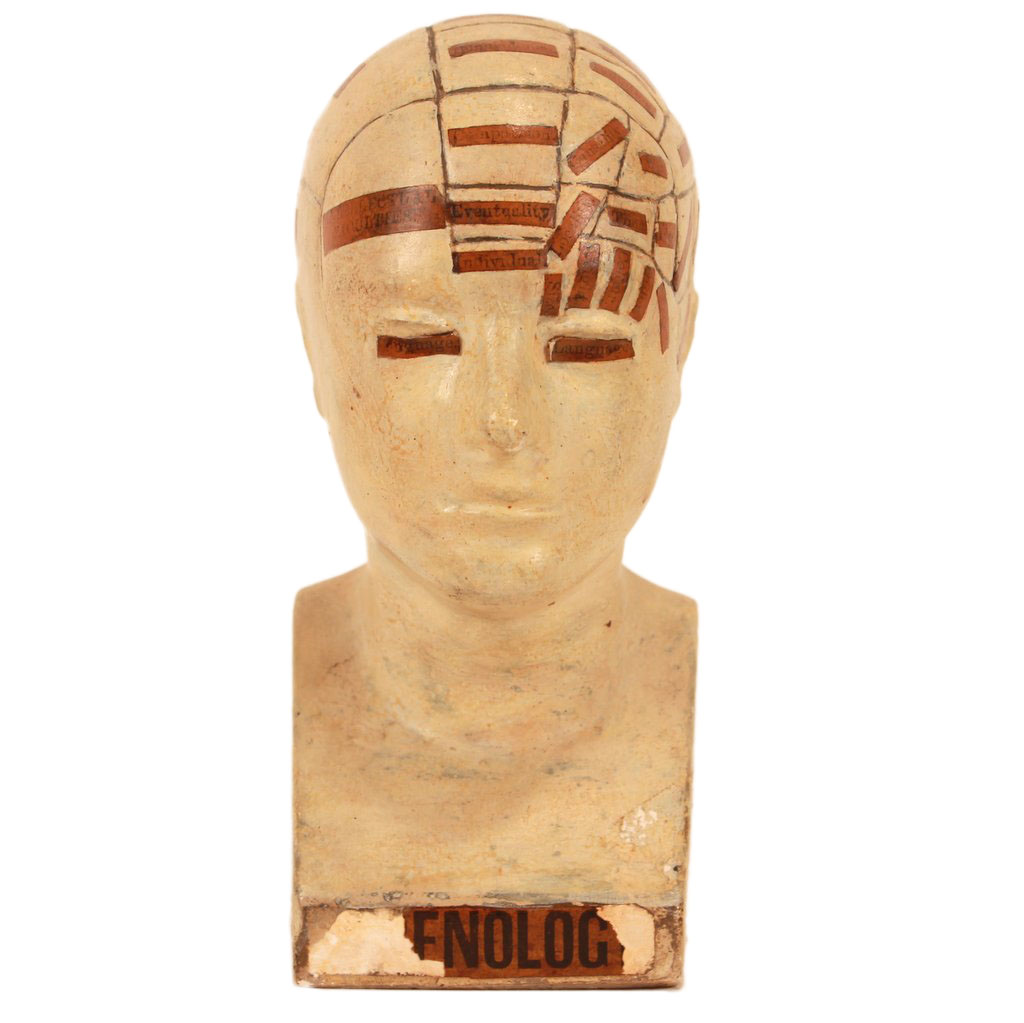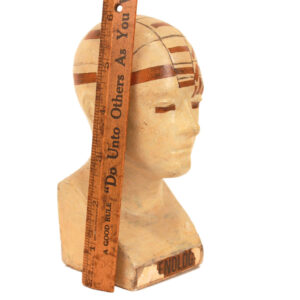Sold: Phrenology Head
Phrenology bust / plaster with applied paper / c. 1870s
Rare and original phrenological head, c. 1870s. Chalkware with sections of the brain labeled with printed paper. The demarcated brain maps out the sections devoted to Moral Sentiments, Wit, Animal Propensities, Benevolence, Approbativeness, etc. The back of the bust advertises the manual Orthodox Phrenology published in 1871 by Ambrose Lewis Vago (1839-1896).
Phrenology (from Greek φρήν (phrēn), meaning “mind”, and λόγος (logos), meaning “knowledge”) was a pseudomedicine primarily focused on measurements of the human skull, based on the concept that the brain is the organ of the mind, and that certain brain areas have localized, specific functions or modules. Although both of those ideas have a basis in reality, phrenology extrapolated beyond empirical knowledge in a way that departed from science. Developed by German physician Franz Joseph Gall in 1796, the discipline was very popular in the 19th century, especially from about 1810 until 1840. Although now regarded as an obsolete amalgamation of primitive neuroanatomy with moral philosophy, phrenological thinking was influential in 19th-century psychiatry. As the vintage of this bust demonstrates, phrenology remained popular and still unquestioned by the 1870s.
At six inches tall, he’s a great desktop or bookshelf size. Handsome antique patina with small scuffs, a few minor chips, etc. (see condition described below). Few of these models survive.
Purchase this fellow for yourself to finally pinpoint the locus of your “Animal Propensities” or present this up-to-date scientific medical model to aid the research of the neuroscientist in your life.
Measurements
6 inches tall
2.5 inches wide
2.5 inches deep
Condition
Very good antique condition with old patina and minor chipping to paper labels, namely the the larger labels in the front and rear.
Shipping
Free in the continental United States. If an international buyer, please contact me for a shipping estimate by clicking here.

























